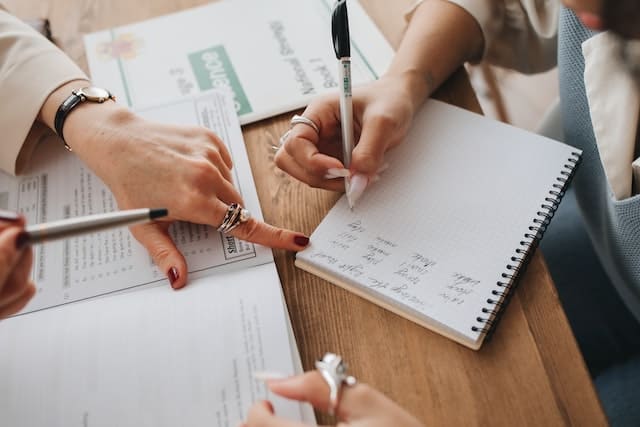As an educator, you understand the importance of providing your students with the best learning strategies available. It is vital that your students have the tools and resources they need to thrive in the classroom and beyond.
With the vast array of teaching approaches and resources available, it can be difficult to determine the best learning strategies for your students.
Therefore, in this article, we will discuss some of the most effective learning strategies you can use to help your students succeed.
By the end of this article, you will have a better understanding of the best strategies you can use to provide your students with an excellent learning experience.

What are Some of the Best Learning Strategies for Students?
As mentioned before, as an educator, you want to help your students learn effectively and efficiently.
However, not all students learn in the same way. Some may be visual learners, while others may be auditory learners.
Therefore, it is important to implement a variety of learning strategies to cater to the different learning styles of your students.
So, here in the following paragraphs, we will explore some of the best learning strategies that you can use to help your students learn and retain information.
1. Develop an Organized Study Plan
One of the best learning strategies for your students is to help them develop an organized study plan.
By providing students with a lesson plan, they will be able to structure their learning and stay on track with their goals.
An organized study plan should encompass both short-term and long-term goals. It should provide a clear timeline of when the student should complete certain tasks and should include regular check-ins to evaluate progress.
In addition, try to provide students with useful resources to help them succeed in their studies.
These resources can include online study guides, practice exams, and other materials to help reinforce concepts.
2. Utilize Different Methods of Learning
Utilizing different methods of learning is essential to ensure that students are able to grasp the material in the best way possible.
It is important to provide a variety of ways to learn the same content – such as visual, auditory, and kinesthetic – as this allows students to choose the best approaches for their learning styles.
Incorporating activities and worksheets are a great way to ensure that students are able to apply the concepts they learn and make learning more fun.
More than that, providing opportunities for students to collaborate with their peers is also an effective learning strategy.
3. Incorporate Hands-on Activities
Hands-on activities allow students to learn through experience. By engaging in activities, students can apply the concepts they have learned to real-life situations.
This can help them better understand the material and retain it more effectively.
For example, you could ask students to build a model of a famous monument to help them understand its architecture and history.
4. Encourage Group Work
Collaborative learning can be an effective way for students to learn from each other.
Working in groups can help students develop their communication skills and learn to work effectively with others.
Group work can also be a great way for students to develop their social skills and share their knowledge and ideas with each other.
For example, you could ask students to work in groups to research a topic and then present their findings to the class.
5. Utilize Memorization Techniques
Memorization techniques are an invaluable way to help your students retain and recall information.
For example, mnemonic devices are a great way to help students remember facts or items in a certain order.
You could also have students recite facts to one another, or encourage them to keep a written record of their study notes, which can be useful when reviewing the material later.
Utilizing these memorization techniques can be an effective way to help your students retain and recall information.
6. Incorporate Visual Aids to Reinforce Understanding
One of the best learning strategies for your students is to incorporate visual aids to reinforce deeper understanding.
Visual aids can be incredibly helpful for visual learners who need an image to make sense of the concepts they are learning and make them easier to remember information when they see it in a visual form
They can also be useful for all learners, particularly when it comes to understanding complex topics.
Visual aids can include diagrams, videos, graphs, photos, and more. They can be used to help explain difficult concepts, make abstract ideas concrete, and help stimulate discussion among students.
Incorporate visual aids into your lessons and your students will be more likely to understand and remember the material.
For example, you could use a diagram to explain the structure of a cell or a chart to show the differences between two historical events.
7. Use Technology
Technology can be a powerful tool for learning. Educational apps, online learning platforms, and interactive whiteboards can help students engage with material in new and exciting ways.
Technology can also help students access information from anywhere at any time.
For example, you could use an educational app to teach students a new language or use an interactive whiteboard to demonstrate a science experiment.
8. Provide Regular Assessments
Providing regular assessments as feedback on your student's learning is an important part of ensuring that everyone is on the same page.
Assessments will help you to identify areas where your students might need additional guidance, as well as areas of strength and improve their critical thinking skills.
This can be as simple as regular quizzes or tests, but other forms of assessment, such as group activities or written assignments, can also be used to measure understanding.
Developing an assessment strategy that works for your students will help you to better track their progress, address any areas of difficulty, and celebrate the successes in their learning process.

Final Thoughts
There are many different learning strategies that you can use to help your students learn effectively
By taking the time to understand the different learning styles of students, educators can create effective learning strategies that will help students reach their full potential.
Remember, the goal is to help your students not just learn, but also retain and apply the knowledge they have gained.
Cudy helps connect tutors, students, and parents to conduct and schedule online lessons anytime and anywhere. Join Cudy and subscribe to our blog for many study tips and more!
FAQs
Which teaching strategy helps students to learn more?
There are many teaching strategies that can help students learn more effectively. Some examples include visualization techniques, hands-on learning experiences, setting up different learning stations that support different learning methods, or collaborative learning through group work.
What are active learning strategies?
Active learning strategies are methods that engage students in their learning by asking them to think, discuss, investigate, and create. These strategies can include activities such as practicing skills or problem-solving.
How can you promote learning in the classroom?
There are a number of ways you can promote learning in the classroom. One way is to provide your students with engaging and stimulating content, or you can help your students develop a lifelong love of learning by providing them with opportunities to explore new interests and passions.
How can teachers improve learners’ performance?
There are a number of ways that teachers can improve learners' performance. Some common techniques include providing feedback, setting goals, and providing support. Teachers should also pay attention to their student's individual strengths and weaknesses in order to tailor instruction accordingly.
What can teachers do to encourage learning?
Teachers can encourage learning by taking a variety of steps, such as raising students and making them feel valued, or creating a secure and dependable structure, supporting academic risk, teaching active listening, and having compassion and empathy.






